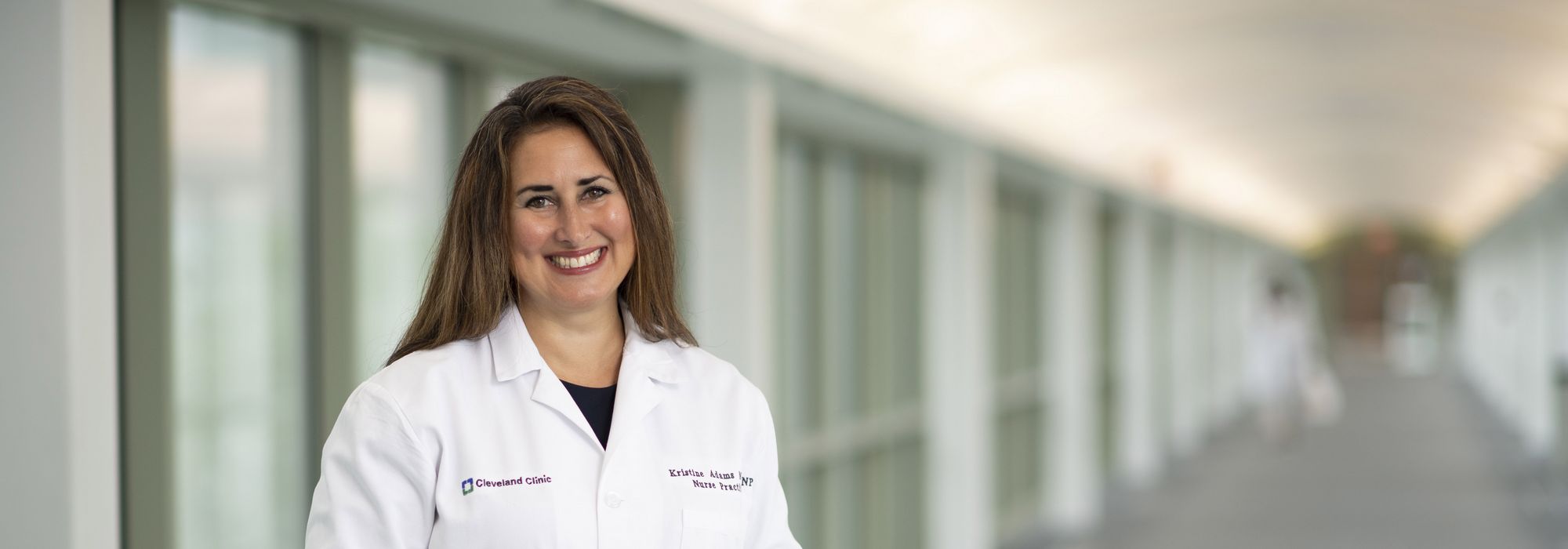
The Cold Chain
Alumna Kristine Adams at Cleveland Clinic
by Susan Neale
Kristine (Kris) Adams, MSN, CNP, ('92) is associate chief nursing officer for care management and ambulatory services for the Cleveland Clinic health system. She’s also president of The Ohio State University Nursing Alumni Society. Lately, as she put it, she’s been “absolutely knee deep with the state in the vaccination effort.”
The “cold chain,” explained
The state of Ohio designated three major distribution centers for the COVID-19 vaccine – Ohio State, the Cleveland Clinic and the University of Cincinnati. These centers have the specialized refrigeration equipment that most smaller practices and pharmacies lack to keep vaccines at the right temperature. (The Pfizer vaccine, Adams said, has to be kept at – 74 degrees C. ) “Then it requires a very special process in the thawing and then in the delivery into the patient’s arm. You have a very small window of time.” These three centers are responsible not only for vaccinating their own patients and caregivers, but also for supplying vaccines in an efficient manner to all other places in Ohio that give the vaccines – every Walgreens, CVS, Kroger, POD, and so on.
“We’re in the business of healthcare. We’re not necessarily in the business of supply chain,” Adams said. “We’re partnering with people we’ve never partnered with before.”
“You have a limited supply of vaccine, and you have to divide it between everybody," Adams said at the time of our interview in February, explaining why people were getting closed out of appointments. “Everybody only has a handful of vaccine. It’s like you’re spreading the peanut butter really, really thin.”
“A lot of people out there are feeling lost in trying to figure out how to get a vaccine and why it’s coming out the way it is,” she said. In part to help address this confusion, Adams recently spoke to the Nursing Alumni Society in depth about the vaccine rollout and types of vaccines available.
Healthcare workers in crisis
“Speaking not just for myself but for anyone in healthcare, this has been an extremely difficult year.” The healthcare workforce is understandably overstressed, Adams said. “We’ve been in crisis mode for a year now,” she added, citing the burden on healthcare systems to maintain COVID-19 testing sites, process the labs and manage ICUs and regular wards full of patients sick with COVID-19. On top of that, “Now you are asking that same workforce to put together a clinic to deliver a vaccine ... We had to get really creative." One solution: “We brought back the retired nurse” to give vaccines.
Morale is low in healthcare, and across the country, she said, there have been record numbers of retirements.
Hope for the future
Adams hopes that as a nation, we have learned a lesson about how to handle a pandemic and mass vaccination, so that if this should ever happen again, we’ll be ready. She also hopes that healthcare professionals will be honored and allowed to heal after the pandemic passes. It wouldn’t be right, she said, to just move on without helping people process what has just happened. “We owe an entire workforce some kind of closure."
Adams is excited about upcoming workshops at Cleveland Clinic that will help healthcare professionals there do just that. She suggests, “Ask them what went well, what didn’t go well, what do you wish you had? What could we have done better? What could we have given you? How are you? What support now do we need to give you? Then write down the lessons learned, and share it.” She’s also looking forward to working with Jackie Hoying, PhD, RN, NEA-BC, to roll out the MINDBODYSTRONG program to the Nursing Alumni Society.
“We don’t want it to get lost,” Adams said of all the work done and lessons learned by the healthcare community this past year. She urges healthcare professionals to write down what they’ve been through and what they’ve learned. “Just like we talk about the flu pandemic of 1918,” she said, “They will talk about this forever.”
